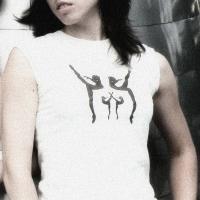
What to do with the pawn center?
In my younger years, I had a headache when there were too many pawns in the center and too many possible captures. With white pawns on d4, c4 and black on d5, c5 my thought process went like this: I take on c5, he takes back, oh no he takes on c4 instead, no I should rather take on d5, then he can take on d4, or recapture on d5 and then I lost track of which pawn captures which and why. Pure calculations wouldn’t do the job here. One has to rely on some positional basis. Why take one or the other pawn? The explanation may lie in getting a better pawn structure, or creating an isolated pawn for the opponent, or hanging pawns. It also might be to open files for your own pieces, or to take advantage of the opponent’s poor development. Another reason might be to create a weak pawn and to put pressure on it. There are cases, when one does not release the pressure in the centre, since it would favor the opponent. I would like to look at a few examples that explain some of what was just said here.
This position came from the Queen's Indian Defense. White just achieved the e4 push, putting pressure on d5. The threat is to take on d5 with the c4 pawn, closing the bishop on b7 (after black's recapture), and then to push e5 to get space. Black has to react to this threat by either taking on e4 or c4. Usually, one wants to take the central pawn e4, because central pawns have more value, but in this case one has to look into more factors. The biggest one is Bb7. After which capture can Bb7 be activated?
This is a typical Kings Indian structure where Black puts pressure on the e4 pawn and tries to attack on the kingside and while white would like to attack on the queenside. G3 and h3 were big concessions, therefore in this line it is unsafe to castle short. White’s idea is to take on f5 and put pressure on the f5 pawn with Nh4 and Qc2, but in this position it doesn’t quite work right away.
In the given position white has to figure out which pawn structure he wants to go for. Usually, a side with two bishops should prefer hanging pawns but in this case the knight gets a good position on g6 where it can jump to f4. White decides to open up the position for his two bishops.
Again, there is tension in the center. White has an option of taking on d5 or c5, thus opening the diagonals for his bishops. Rc8 makes Qc2 feel uncomfortable. Black threatens to release the tension with d:c4 and possibly B:f3, destroying the pawn structure around white’s king. The position is about equal, but white wants to release the tension in the center. Usually, one wants to keep it as long as possible, but in this case Black already has specific threats, so white had to rush.
Overall, when making a decision about which pawns to trade in the centre, one has to take into consideration many aspects of the game. The first example shows how a wrong decision of what pawn to trade lead to a locked bishop on b7 and eventually to a lost game. In the second example white chose the right timing to capture on f5 and put pressure on the pawn. The third example features the right trade by white in the centre that lead to a better endgame. In the final example the calculation was the most important part. Black miscalculated and made a wrong decision on what pawn to trade. There is much more to explore in the given topic. The best way to learn is to look into one’s own games and to see whether one took the right decision when there was tension in the center.

